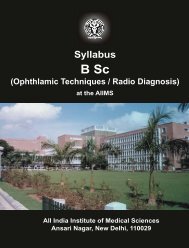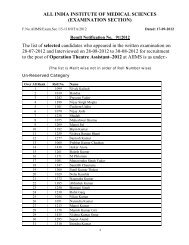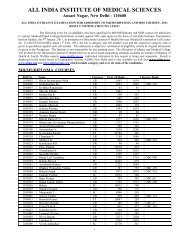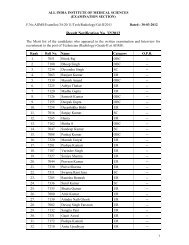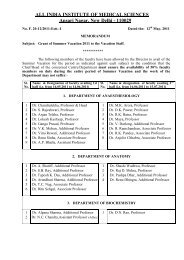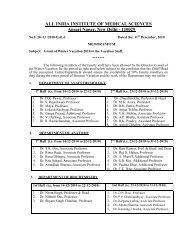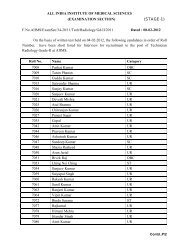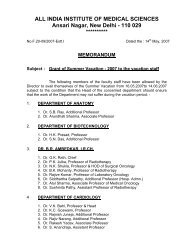Manual for long-term pharmacotherapy - All India Institute of Medical ...
Manual for long-term pharmacotherapy - All India Institute of Medical ...
Manual for long-term pharmacotherapy - All India Institute of Medical ...
You also want an ePaper? Increase the reach of your titles
YUMPU automatically turns print PDFs into web optimized ePapers that Google loves.
N-dealkylation and has an active metabolite norbuprenorphine. Elimination half-life <strong>of</strong> intravenous<br />
buprenorphine is 3.21 hours and <strong>for</strong> sublingual buprenorphine is 27.2 hours. Following three times daily<br />
chronic sublingual dosing <strong>of</strong> 0.4 mg, steady state levels <strong>of</strong> buprenorphine are achieved at about 4 days.<br />
Effectiveness<br />
A recent study <strong>of</strong> meta-analysis on buprenorphine maintenance versus placebo or methadone maintenance<br />
has been published by Cochrane Database. This report is based on an extensive search <strong>of</strong> data up to 2001 from<br />
various sources including medline. This study reported that thirteen studies met the inclusion criteria, all were<br />
randomised controlled trials and all but one was double blind. The methodological quality <strong>of</strong> these studies<br />
was good. Retention in treatment and drug use were the two important outcome measures.<br />
Retention in Treatment<br />
Buprenorphine maintenance treatment compared favourably with placebo in retaining patients in treatment<br />
although it appeared significantly less effective than methadone in retaining patients in treatment.<br />
Illicit drug use<br />
Buprenorphine was more effective than placebo in suppressing heroin use. However, only high dose and very<br />
high dose buprenorphine suppressed heroin use significantly above placebo. The study concluded that<br />
buprenorphine is an effective intervention <strong>for</strong> use in the maintenance treatment <strong>of</strong> heroin dependence, but is<br />
not more effective than methadone at adequate doses. The <strong>India</strong>n studies too have documented the efficacy <strong>of</strong><br />
buprenorphine in reducing drug use and improving psychosocial functioning.<br />
Buprenorphine substitution programme: Experience from <strong>India</strong><br />
The use <strong>of</strong> buprenorphine maintenance <strong>for</strong> the treatment <strong>of</strong> opioid addicts is still very limited in the country. A<br />
project on community-based treatment <strong>for</strong> heroin addiction using buprenorphine was carried out by the De-<br />
addiction Centre, <strong>All</strong> <strong>India</strong> <strong>Institute</strong> <strong>of</strong> <strong>Medical</strong> Sciences as early in 1993. This study included buprenorphine<br />
maintenance as a part <strong>of</strong> community based treatment in a quasi-experimental pre-post design. The project<br />
included 108 male subjects with heroin dependence. The dosage <strong>of</strong> buprenorphine used in this project was<br />
low and treatment was provided <strong>for</strong> a period <strong>of</strong> 6-11 months. Three sessions on psychosocial intervention<br />
were also carried out. At follow up about 70 percent had improved indicating no use or very little use <strong>of</strong> heroin<br />
in spite <strong>of</strong> the low doses used.<br />
Another study that was carried out in Nagaland used buprenorphine maintenance on opioid dependent<br />
subjects. Fifty-four male opioid dependent patients were given buprenorphine in low doses and were<br />
followed up to six-months. The Addiction Severity Index (ASI) scores reduced significantly in the 'drug' and<br />
'family' domain <strong>of</strong> ASI at six months <strong>of</strong> follow up indicating reduction in problems in these domains.<br />
Data from SHARAN (a Delhi based NGO) in the year 1995-1997, showed that out <strong>of</strong> 447 injecting drug users on<br />
buprenorphine, 148 (33%) had stopped injecting while 158 (35%) had reduced the frequency <strong>of</strong> injecting and<br />
sharing <strong>of</strong> equipment.<br />
26




